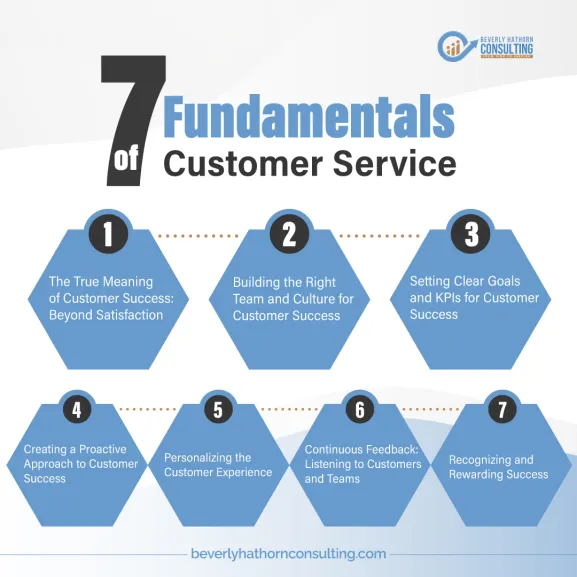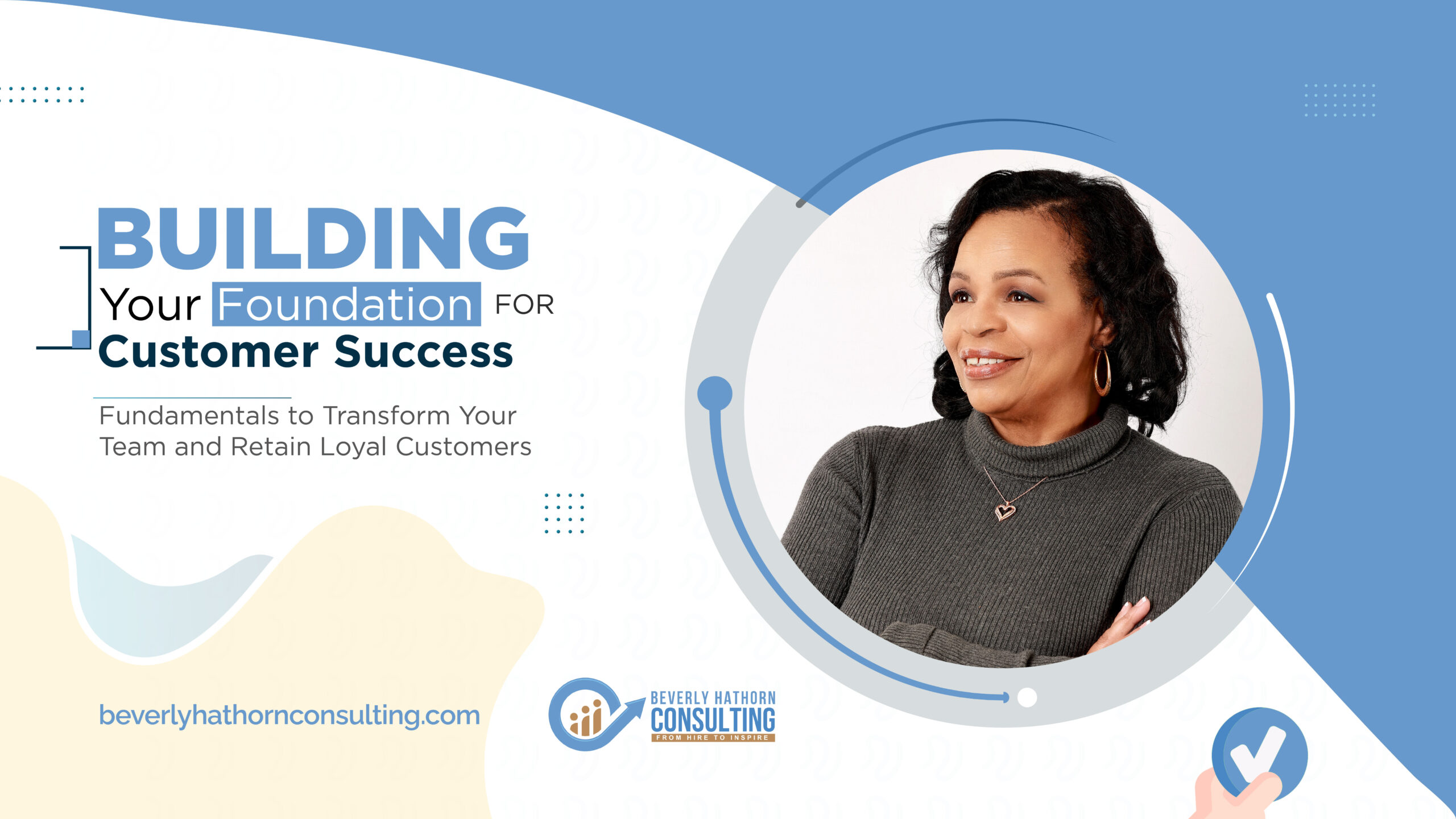We are all aware that customer success is the lifeblood of a successful company and is more than just a trendy term. However, many businesses may find it difficult to comprehend and apply the principles of Customer Service Fundamental.
What does it mean to give a team the freedom to cultivate client loyalty, lower attrition, and actively support the expansion of your business?
Furthermore, how do you establish customer success as a central, motivating factor in your culture?
The key components of a successful customer success strategy will be discussed in this guide, along with examples of how creating a customer-focused culture not only benefits your clients but also enables your team to reach its full potential.
This article is for you if you are prepared to build a team that can turn clients into lifelong supporters in addition to providing excellent customer service!

1. The True Meaning of Customer Success: Beyond Satisfaction
The majority of businesses aim to satisfy their customers by meeting their expectations and fostering positive experiences. However, customer success is more than just satisfaction; it is about going above and beyond to make sure that customers get the results they want from your product or service. Customer success is not just a department; it is a culture, a mission, and a shared commitment to growth—it is everyone’s responsibility!
Customer loyalty is higher when they feel appreciated, understood, and supported. Giving your team the customer service fundamental tools they need to comprehend the “why” behind each customer’s needs and take an active interest in their success is a true customer success strategy. Training and coaching are the first steps in a customer-centric approach, which helps your team view every interaction as a chance to have a significant impact. And when your team accepts this responsibility in a positive way, they’re not just completing tasks—they’re changing lives.
2. Building the Right Team and Culture for Customer Success
The success of your customers starts and ends with your team. It involves assembling a team of individuals who are inherently sympathetic, problem-solving-oriented, and dedicated to growth—for both themselves and your clients. It is crucial to hire people who possess these attributes in order to establish an atmosphere in which they can flourish.
Here’s how to create a customer success culture that resonates with your team:
- Instill a Sense of Purpose:
Ensure that all members of the team are aware of the organization’s mission and comprehend the principles of Customer Success Fundamental. Give examples of how their work has improved the lives of their clients to demonstrate that they are assisting clients in reaching their objectives rather than merely resolving problems.
- Prioritize Continuous Learning:
The learning process is continuous in a customer success team. Encourage team members to remain inquisitive and growth-oriented, whether that means learning new tools, enhancing communication abilities, or comprehending new customer behaviors.
- Empower Your Team with Ownership:
When team members believe they have the authority to decide and resolve issues, a customer success culture flourishes. In addition to increasing job satisfaction, empowering them to take charge of their roles will encourage a more proactive approach to customer success.
Putting money into training programs focusing on customer service fundamentals to instill these values is a long-term investment that will increase customer and employee loyalty. The satisfaction that comes from assisting others in achieving their objectives creates an internal culture that spreads outside of your team.
3. Setting Clear Goals and KPIs for Customer Success
Sometimes, customer success objectives seem intangible. How can something that is based on loyalty, relationships, and results be measured? Begin by determining specific, quantifiable KPIs (Key Performance Indicators) that demonstrate the strength of your team’s performance and the state of your customer relationships.
Here are some KPIs that successful teams track:
- Customer Retention Rate:
A high retention rate is a definite sign of successful customer success initiatives.
- Customer Health Score:
To determine each customer’s “health,” combine metrics such as support interactions, engagement levels, and usage frequency.
- Customer Satisfaction (CSAT) and Net Promoter Score (NPS):
These metrics can reveal information about the perceptions that consumers have of your brand.
- Churn Rate:
It is important to understand why customers leave. You can address the underlying causes and create proactive solutions with the correct data.
Tracking these metrics doesn’t just show where your team is excelling or falling short—it serves as a valuable feedback loop, encouraging team members to continuously improve their approach and helping leadership pinpoint areas for additional training or support.
4. Creating a Proactive Approach to Customer Success
Customer success isn’t about waiting for customers to reach out with problems; it’s about identifying potential issues before they happen. This is where data and customer insights become invaluable tools.
By actively monitoring customer behavior, your team can:
- Spot Early Warning Signs:
A customer may be unhappy or confused if their usage patterns change or their level of engagement declines. This enables your team to proactively contact the customer and offer assistance or extra resources to help them stay on course.
- Tailor Support to Specific Needs:
Every customer is different, and a proactive approach allows you to tailor communication, offers, and solutions to meet their unique needs.
- Build Relationships Through Regular Check-Ins:
Regularly checking in, even when things are going well, helps reinforce the relationship and demonstrates that you care about their continued success.
A proactive mindset transforms customer success teams from “problem solvers” to “success partners.” This approach fosters loyalty and shows customers they have a dedicated ally in your team, ready to help them navigate any challenge.
5. Personalizing the Customer Experience
The frustration of receiving generic responses from customer service is something we are all familiar with. For this reason, personalization is essential to client success. Customers want to feel seen and valued—and by tailoring interactions to their specific needs and preferences, you’re showing them that they matter to your organization.
For true personalization:
- Know Their Journey:
Teach your team to comprehend the customer journey at every stage and to identify the distinct obstacles and objectives that customers encounter at each stage.
- Empower Agents to Go Beyond Scripts:
Although scripts can aid in maintaining consistency, a more meaningful experience is produced when your team is given the freedom to engage in genuine dialogue. Give them the tools they need to interact with a range of client personalities, read their emotions, and establish rapport.
- Leverage Customer Data for Insights:
Your team can use data not only to resolve problems but also to determine what each customer values most if they receive the proper training.
When customers feel a genuine connection with your team, it’s a game-changer. They’ll know your team isn’t just reading off a list of solutions—they’re invested in helping them succeed.
6. Continuous Feedback: Listening to Customers and Teams
Customer success is not a set-it-and-forget-it model. It’s an ongoing journey that requires regular feedback from both customers and your team. Understanding the customer success fundamentals, customer needs and expectations is essential, but so is empowering your team to share insights and challenges.
Ways to implement continuous feedback loops include:
- Customer Feedback Surveys:
Encourage honest feedback after significant interactions to understand their experiences and identify areas for improvement.
- Regular Team Debriefs:
Hold debrief sessions to let team members discuss their challenges, share success stories, and brainstorm solutions. This keeps morale high and fosters a sense of teamwork.
- Actionable Insights:
Gather feedback from all sources, analyze it for trends, and use it to make meaningful adjustments to your processes.
An organization committed to improvement is one that wins trust, both from customers and employees. And when your customers and your team feel heard, they’re more engaged, loyal, and motivated to contribute positively.
7. Recognizing and Rewarding Success
One of the most powerful motivators for any team is knowing their hard work is noticed and appreciated. Recognizing successes not only reinforces positive behaviour but also boosts morale and team loyalty. This is especially important in customer success, where wins are sometimes subtle and hard-won.
Celebrate both big and small wins:
- Spotlight Customer Success Stories:
Highlight positive customer experiences in team meetings or company-wide communications. Show how the team’s efforts made a difference.
- Individual and Team Rewards:
Offer incentives for achieving team goals, maintaining high satisfaction ratings, or improving customer retention rates.
- Create a Culture of Recognition:
Promote an environment where team members value one another’s contributions. When people feel appreciated by their peers, it fosters a more positive and collaborative work environment.
Recognition cultivates a deep sense of pride in your team and reminds them why they chose this field. Every thank-you note, every spotlight story, and every peer-to-peer shoutout keeps your team driven and connected to the mission.
Your Call to Action: Build a Team that Drives Real Results
Building a successful customer success team requires commitment, planning, and the correct direction. Ask yourself as you assess your present tactics: Are you giving your team the tools they need to truly make an impact? Do they receive the kind of training and assistance that promotes long-term success and client loyalty?
If you are prepared to witness the transformative power of an empowered and optimized customer success team, now is the time to make the investment in their expansion. Do not allow another year to pass with untapped potential. Collaborate with professionals who can help you create a customer success team that is driven, informed, and prepared to convert clients into devoted supporters.
Let’s start building a customer success foundation that aligns with your company’s vision and drives measurable results.
Contact us to learn more about our customer success training and process improvement plans—together, we’ll make this the year, your team, and customers thrive!



